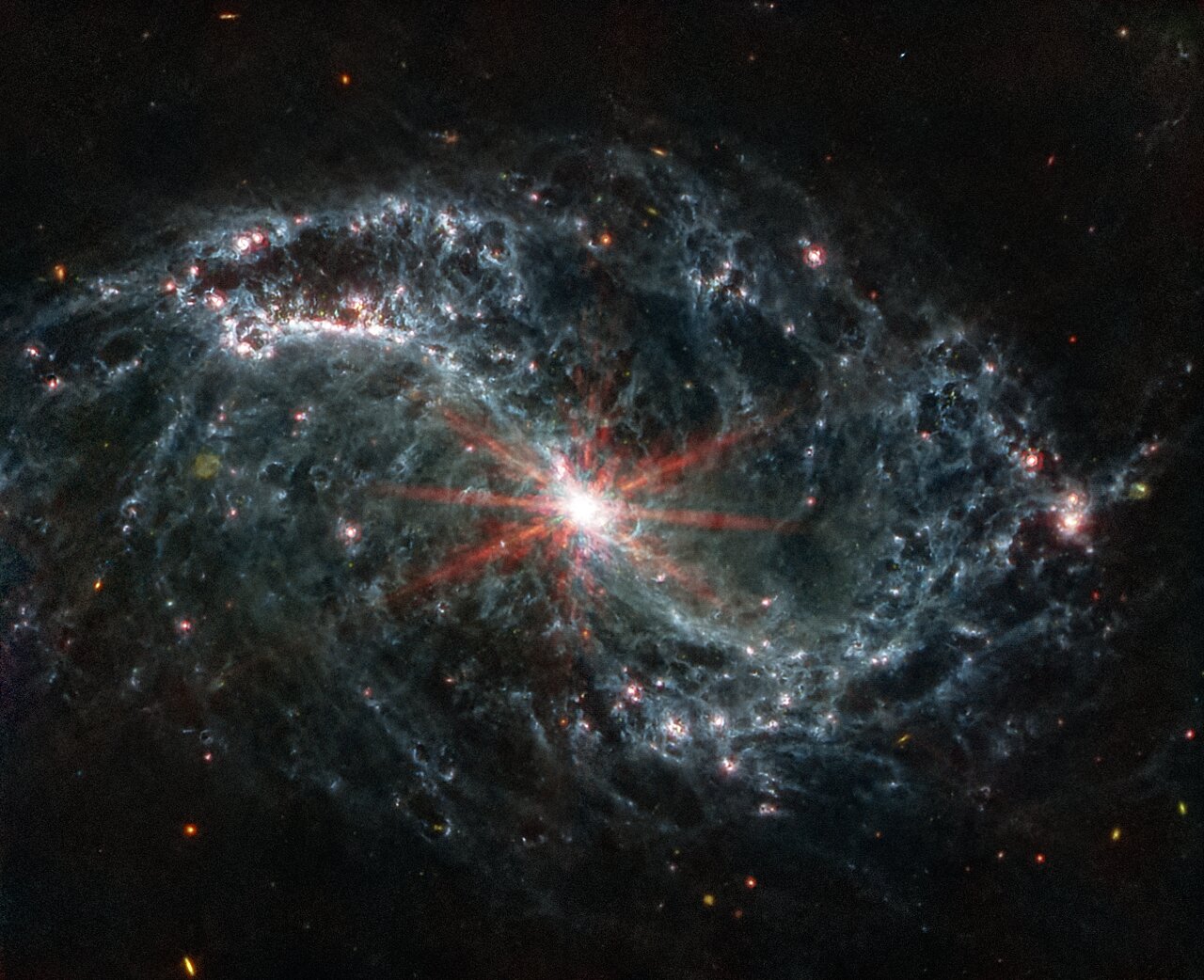NASA | GSFC | STScI | ESA |James Webb Space Telescope | 2023 Feb 16
Researchers using the NASA/ESA/CSA James Webb Space Telescope are getting their first look at star formation, gas, and dust in nearby galaxies with unprecedented resolution at infrared wavelengths. The data have enabled an initial collection of 21 research papers which provide new insight into how some of the smallest-scale processes in the Universe — the beginnings of star formation — impact the evolution of the largest objects in our cosmos: galaxies.
The largest survey of nearby galaxies in Webb’s first year of science operations is being carried out by the Physics at High Angular resolution in Nearby Galaxies (PHANGS) collaboration, involving more than 100 researchers from around the globe. The Webb observations are led by Janice Lee, Gemini Observatory chief scientist at the US National Science Foundation’s NOIRLab and an affiliate astronomer at the University of Arizona in Tucson.
The team is studying a diverse sample of 19 spiral galaxies, and in Webb’s first few months of science operations, observations have been made of five of those targets — M74, NGC 7496, IC 5332, NGC 1365, and NGC 1433. The results are already astounding astronomers.
The images from Webb’s Mid-Infrared Instrument (MIRI) reveal the presence of a network of highly structured features within these galaxies — glowing cavities of dust and huge cavernous bubbles of gas that line the spiral arms. In some regions of the nearby galaxies observed, this web of features appears built from both individual and overlapping shells and bubbles where young stars are releasing energy. ...
Unveiling Networks of Stellar Nurseries in Nearby Galaxies
NOIRLab | 2023 Feb 16
PHANGS–JWST First Results
Astrophysical Journal Letters
Astrophysics Data System
Cornell University: arXiv


